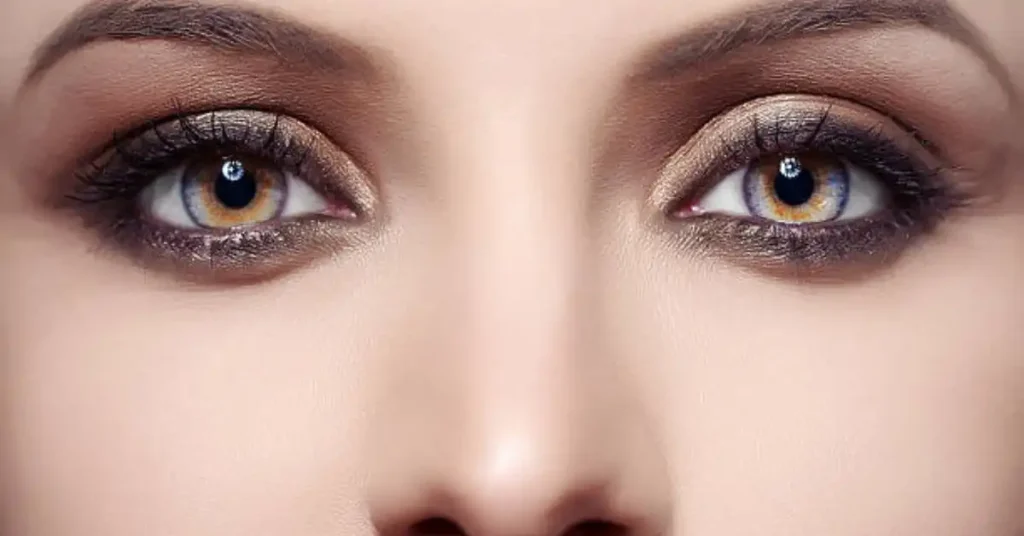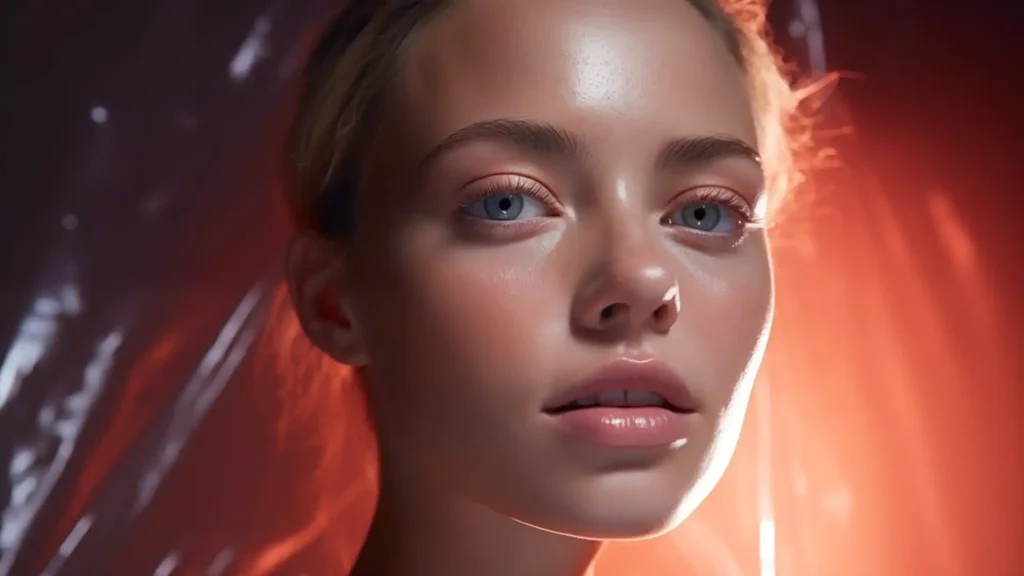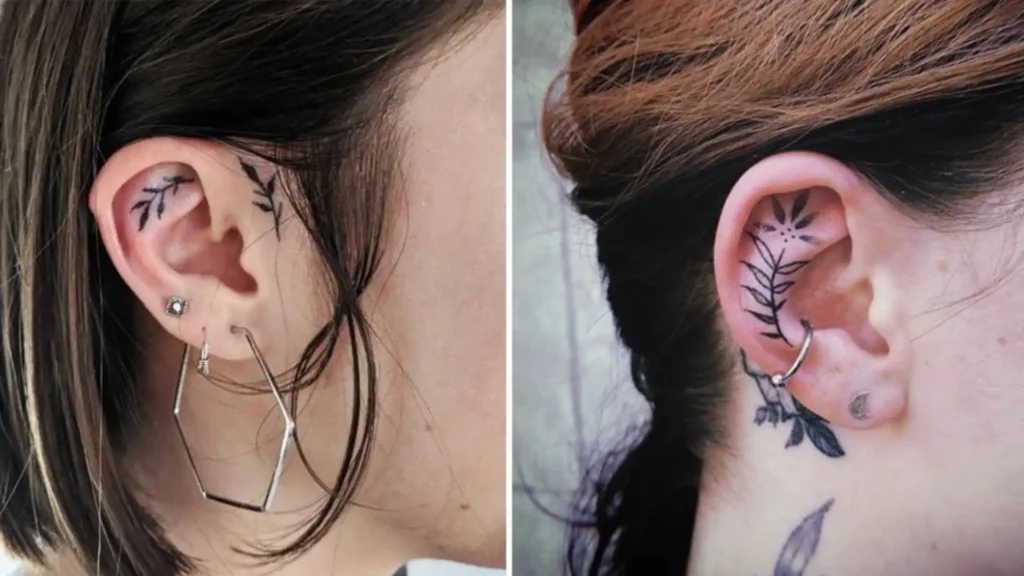We’ve all heard the saying that the eyes are the windows to the soul, but could they also reveal secrets about our ancestry and personality? While eye color is often considered a simple genetic trait, recent studies show that it’s far more complex than we once thought.
Hazel eyes, in particular, stand out because they seem to shift in color, appearing green, brown, or even golden depending on the light. But what do these rare irises really mean? Where do they come from? Let’s dive into the fascinating world of one of the most unique eye colors in the world.
Hazel Eyes Are a Rare Genetic Wonder
![Hazel Eyes: The Rare, Mysterious, and Ever-Changing Beauty 3 A close-up of a person with hazel eyes, showing their mix of green, brown, and golden hues.]](https://hebeautyhere.com/wp-content/uploads/2025/02/A-close-up-of-a-person-with-hazel-eyes-showing-their-mix-of-green-brown-and-golden-hues.webp)
Hazel eyes are among the rarest eye colors in the world. While they are more common than green or gray eyes, only about 5% of the world’s population has them. Unlike purely brown or blue eyes, these rare irises contain a mix of brown, green, and amber, making them appear to change color under different lighting conditions.
This eye color is the result of a moderate amount of melanin in the iris, which scatters light in a way that produces multiple shades. Scientists believe that hazel eyes originated from a unique genetic combination found in populations with mixed ancestry.
The Origins of Hazel Eyes: A Blend of Many Cultures
![Hazel Eyes: The Rare, Mysterious, and Ever-Changing Beauty 4 A world map highlighting regions where hazel eyes are most commonly found—Europe, the Middle East, North Africa, and Latin America.]](https://hebeautyhere.com/wp-content/uploads/2025/02/A-world-map-highlighting-regions-where-hazel-eyes-are-most-commonly-found—Europe-the-Middle-East-North-Africa-and-Latin-America.webp)
Hazel eyes are most commonly found in people of Middle Eastern, Spanish, North African, and Brazilian descent, though they also appear in individuals from Europe and the United States.
Unlike blue or green eyes, which are more common in Northern Europe, hazel eyes are associated with regions where diverse ethnic groups have historically intermingled. This is why people with these rare irises often have genetic links to multiple ancestries.
Why Do Hazel Eyes Seem to Change Color?
![Hazel Eyes: The Rare, Mysterious, and Ever-Changing Beauty 5 A series of three photos showing the same person with hazel eyes in different lighting—one in bright sunlight, one in dim light, and one with artificial lighting.]](https://hebeautyhere.com/wp-content/uploads/2025/02/A-series-of-three-photos-showing-the-same-person-with-hazel-eyes-in-different-lighting—one-in-bright-sunlight-one-in-dim-light-and-one-with-artificial-lighting.webp)
One of the most fascinating things about hazel eyes is their chameleon-like ability to shift colors. This is due to the way melanin and light scattering interact in the iris. Here’s how it works:
- Bright sunlight: Hazel eyes may appear more golden or light brown because the light enhances warm tones.
- Dim lighting: The eyes may seem darker, almost brown, due to reduced light reflection.
- Artificial light: Under indoor lighting, these rare irises may take on a green or amber hue, depending on their specific melanin composition.
This ability to change color is one of the main reasons these rare irises are considered so unique.
People With these rare irises May Have a Higher Pain Tolerance
![Hazel Eyes: The Rare, Mysterious, and Ever-Changing Beauty 6 A split-screen image—on one side, a person with hazel eyes in warm lighting (golden tones), and on the other side, the same eyes in cool lighting (greenish tones).]](https://hebeautyhere.com/wp-content/uploads/2025/02/A-split-screen-image—on-one-side-a-person-with-hazel-eyes-in-warm-lighting-golden-tones-and-on-the-other-side-the-same-eyes-in-cool-lighting-greenish-tones.12.webp)
Did you know that your eye color may affect how you feel pain? A study found that people with lighter eyes, including hazel, green, and blue, tend to have a higher pain tolerance compared to those with dark brown eyes.
Scientists believe this is because melanin, which gives color to the eyes, is linked to how the brain processes pain. Since hazel eyes contain less melanin than dark brown eyes but more than blue eyes, they may offer a balanced mix of sensitivity and resilience.
these rare irises and Personality Traits: Are They Mysterious?
![Hazel Eyes: The Rare, Mysterious, and Ever-Changing Beauty 7 A mysterious-looking person with hazel eyes, surrounded by soft lighting to enhance the eye color.]](https://hebeautyhere.com/wp-content/uploads/2025/02/A-mysterious-looking-person-with-hazel-eyes-surrounded-by-soft-lighting-to-enhance-the-eye-color.webp)
Many believe that eye color is linked to personality, and hazel-eyed individuals are often described as:
✔ Independent – Those with this rare eye color often seem mysterious strong-willed and adventurous nature.
✔ Creative – Hazel-eyed individuals often have an artistic or imaginative side.
✔ Mysterious – Since their eye color constantly shifts, many say that people with these rare irises keep others guessing.
✔ Balanced – Just like their mix of colors, they tend to have a good mix of logic and emotion.
While there’s no scientific proof that eye color determines personality, these associations have been passed down through folklore and culture for centuries.
Hazel Eyes Are More Sensitive to Light
![Hazel Eyes: The Rare, Mysterious, and Ever-Changing Beauty 8 A person with hazel eyes squinting in bright sunlight, wearing sunglasses.]](https://hebeautyhere.com/wp-content/uploads/2025/02/A-person-with-hazel-eyes-squinting-in-bright-sunlight-wearing-sunglasses.webp)
Since hazel eyes have less melanin than dark brown eyes but more than blue eyes, they fall somewhere in the middle when it comes to light sensitivity.
- Darker eyes (brown/black) → More melanin → Better UV protection
- Lighter eyes (blue/gray) → Less melanin → Higher sensitivity to light
- Hazel eyes → Moderate melanin → Mild sensitivity to bright light
This means that people with hazel eyes may need sunglasses more often than those with very dark brown eyes, but they are still more resistant to glare than blue-eyed individuals.
Famous People With Hazel Eyes
![Hazel Eyes: The Rare, Mysterious, and Ever-Changing Beauty 9 A collage of celebrities with hazel eyes, such as Angelina Jolie, Tyra Banks, and David Beckham.]](https://hebeautyhere.com/wp-content/uploads/2025/02/A-collage-of-celebrities-with-hazel-eyes-such-as-Angelina-Jolie-Tyra-Banks-and-David-Beckham.webp)
Some of the most famous celebrities in the world have hazel eyes, including:
🌟 Angelina Jolie – Her mesmerizing hazel-green eyes often appear different in various lighting.
🌟 Tyra Banks – The supermodel’s hazel eyes give her a striking, exotic look.
🌟 David Beckham – The soccer star’s these rare irises have a mix of green and golden tones.
Their eye color adds to their unique and captivating appearances, making hazel eyes even more desirable.
Are Hazel Eyes the Most Enigmatic Eye Color?
![Hazel Eyes: The Rare, Mysterious, and Ever-Changing Beauty 10 A split-screen image—on one side, a person with hazel eyes in warm lighting (golden tones), and on the other side, the same eyes in cool lighting (greenish tones).]](https://hebeautyhere.com/wp-content/uploads/2025/02/A-split-screen-image—on-one-side-a-person-with-hazel-eyes-in-warm-lighting-golden-tones-and-on-the-other-side-the-same-eyes-in-cool-lighting-greenish-tones.webp)
With their shifting colors, rarity, and genetic complexity, these rare irises stand out as one of the most fascinating eye colors in the world.
Whether your these rare irises lean more towards green, brown, or gold, one thing is certain—they are uniquely yours. No two hazel eyes are exactly alike, making them as individual as a fingerprint.
Do you have these rare irises? Have you noticed their color changing under different lighting? Let us know in the comments!
Follow us on: 📌 Pinterest | 📘 Facebook





